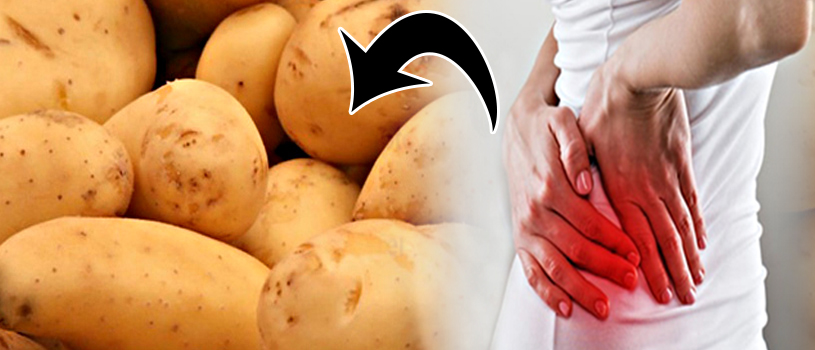Potatoes are the staple food of India and America. You can watch your mothers and chefs using them with every vegetable. Internationally, potatoes have been used as wholesome vegetables, side dishes, snacks, and several burns and skin therapies.
Despite being abundant with nutritional factors, chronic kidney patients are advised to restrict consumption. Have you ever thought why potatoes for kidney patients are not a wise choice? If not, we will discuss this throughout, along with the ways you can have them in your diet.
Potatoes come with three distinctive features; starchy, waxy, and the third lies in between. The potatoes that are best for baking and frying are the starchy ones.
The starch present in them doesn’t let themselves hold together when baked or cooked. They turn themselves fluffy and absorbent and go well with the Indian stuffed bread (Aloo Parantha) after mashing.
Waxy potatoes are the potatoes that have a wax-like texture and hold their shape even after moderate cooking, frying, and baking. These are the types of potatoes that work well with the curry dishes and soups.
The all-purpose potatoes are the ones that have less starch and near to the waxy potatoes. They can maintain their shape even when they are overcooked or boiled. It is the best supplement for the people looking to add potatoes in combination with other vegetables.
As for kidney patients, potatoes might need other processing to make them edible even when they are under the Ayurvedic treatment for kidney diseases. The market is flooded with different methods such as soaking and blanching.
These procedures reduce potassium in them and make them worth having in the renal dietary meals. You might have to consult with your nephrologist/Ayurvedacharya/dietician about which of the sixteen types of potatoes you should eat. Here are these different types:
- Russet
- Jewel Jam (Sweet Potato)
- Japanese Sweet Potato
- Hannah Sweet Potato
- Rose Finn Apple
- Russian Banana
- Red Thumb
- French Fingerling
- LaRette
- Austrian Crescent
- Red Gold
- Purple Majesty
- Norland Red
- Yukon Gold
- Kennebec
All blue
Out of all these sixteen types, Norland Red, Yukon Gold, Kennebec, and all blue potatoes are commonly found in India whereas, jewel jam and Japanese sweet potatoes are available in the pre-winter season only.
However, the restriction remains the same. Since years, dieticians have restricted the consumption of potatoes by a kidney patient because of its richness in potassium. Even a small potato contains a significant amount of potassium (700 mg).
A chronic kidney disease patient has a medical condition of elevated potassium levels in the blood that may get boosted if we don’t follow a specific procedure and consume a potato otherwise. The experts of Ayurvedic treatment say that the following three methods may reduce potassium levels:
Soaked:
The soaking process of the potatoes is unlike dipping a whole potato in water; instead, it follows a procedure as:
- Wash an average-sized potato
- Cut that into slices or cubes, or you may even grate
- Take a pan and pour in the water (should be at room temperature)
- Soak the diced/sliced/grated potatoes in the water for half an hour
Reason for soaking in room temperature: The only purpose is to reduce the moderate amounts of potassium from the potato. If your dietician is recommending the consumption of potatoes, then it must be followed by the said method to level the potassium amounts in the blood. The dietician may have modified your renal diet chart accordingly.
Boiling:
It is the best process to include potatoes to the diet of kidney patients. Boiling reduces the amount of potassium, starch, and carbohydrates altogether and makes it a renal-friendly vegetable to consume even when undergoing the treatment of chronic kidney diseases.
You just have to take a cooker and put potatoes in it. Boil it for up to 15 minutes and then rinse it. Let it cool and peel off its skin. Mash it and add allowed seasoning and spices to it.
Blanching:
It is the most common method that the chefs and cooks use to rinse out the nutrients and make them worth eating for kidney patients. The process goes this way:
- Cut potatoes in cubes
- Wash them and clear the dust
- Take a pan and pour in the water
- Put it to a boil for five minutes and add the potatoes
- Now rinse off the water and wash the potatoes with cold water
All these procedures make potatoes edible for a kidney patient. A few essential factors by a kidney patient may help in pacing up the speed of recovery from the diseases. These fundamental factors are the quantities, type, and time. Yes, even the time decides how the potatoes are going to react when consumed.
The average time is taken for potatoes to get digested 6 to 7 hours when the body remains physically active; this is why potatoes are not recommended to consume in dinner even to a healthy person.
The Big Takeaway:
People use potatoes in their full meal course, whereas the others use it for snacking and munching. As for kidney patients, potatoes are selectively and conditionally allowed to have in their diet. Potatoes are rich in potassium, starch, and carbohydrates that make it worth excluding from the renal diet.
However, if the procedures like soaking, blanching, and boiling are followed, then the kidney patients may include potatoes to their diet and enjoy the delicacy of versatile potatoes. In India, people are fond of using the Kennebec, All blue, and Yokum Gold potatoes out of the sixteen types of potatoes that Mother Nature has provided us with.


Incredible points. Outstanding arguments. Keep up the great work.
Muchos Gracias for your blog post.Much thanks again. Fantastic.